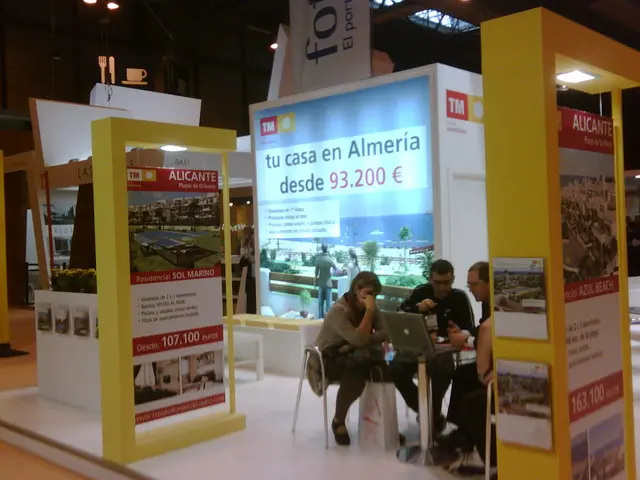Unanticipated Trigger for France's Heatwaves: California's Artificial Cooling Methods
Heat waves, prolonged periods of excessively hot weather often accompanied by high humidity, pose a significant challenge to many regions worldwide. As global temperatures continue to rise due to climate change, these extreme weather events are becoming more frequent and intense. The complex interplay between natural climate phenomena and human activities is a subject of ongoing scientific research. In this article, we delve into the relationship between artificial cooling efforts in California and their potential impact on global climate, particularly heat waves in France.
The El Niño-Southern Oscillation (ENSO), a periodic fluctuation in sea surface temperature and air pressure over the equatorial Pacific Ocean, is a key player in global climate dynamics. ENSO has two main phases: El Niño, where waters are warmer than average, and La Niña, where they are cooler. These phases can disrupt typical weather patterns around the world, causing increased rainfall, droughts, or heat waves in different regions.
One proposed geoengineering method to cool the planet is Stratospheric Aerosol Injection (SAI), which involves injecting sulfur aerosols into the stratosphere to reflect sunlight, mimicking volcanic eruptions like Mount Pinatubo. While this may reduce global temperatures temporarily, it has uncertain and potentially risky side effects, including shifts in ozone layers, jet streams, monsoon patterns, and precipitation cycles globally. These changes could hypothetically alter regional climate and weather patterns far from the injection site, but precise impacts are not well understood yet.
However, it's essential to clarify that there is no direct scientific evidence or studies explicitly linking artificial cooling efforts in California to climate anomalies or heat waves in other regions such as France. California's efforts tend to focus more on monitoring and managing local heat risks rather than artificial climate modification. For example, California has developed tools like CalHeatScore to warn residents about heat waves and is investing in heat protection strategies, which are localized climate adaptation measures rather than causes of climate anomalies elsewhere.
Artificial cooling measures can, however, have indirect effects on atmospheric conditions beyond local boundaries. For instance, large-scale air conditioning systems and reflective roofing can alter microclimates within urban areas, leading to changes that may extend beyond city boundaries. The European Centre for Medium-Range Weather Forecasts (ECMWF) has used complex climate models to simulate how localized cooling efforts could influence global weather systems, suggesting that the reduction in temperature over extensive urban areas in California could weaken certain jet streams.
To mitigate unintended consequences of artificial cooling, strategies such as comprehensive impact assessments, adaptive management practices, international collaboration and policy development, and investment in sustainable technologies should be employed. Through the implementation of these comprehensive strategies, we can strive towards a future where human ingenuity harmonizes with nature's intricate systems rather than disrupting them.
California has adopted advanced technologies for artificial cooling, such as cool roofs, cool pavements, urban greening initiatives, and innovative cooling systems using renewable energy sources. By adopting these technologies, California is not only addressing its local heat risks but also contributing to the global effort to mitigate climate change.
In conclusion, while artificial cooling methods that involve aerosols can have global climate consequences, including potentially altering weather patterns and anomalies far from the source region, there is no confirmed scientific linkage showing that artificial cooling efforts in California specifically cause or impact heat waves or climate anomalies in France. Further research is needed to clarify these complex interactions and ensure that our climate intervention efforts are informed, collaborative, and sustainable.
References: [1] National Academies of Sciences, Engineering, and Medicine. (2015). Geoengineering Climate: Technical Evaluation and Discussion of Impacts. Washington, DC: The National Academies Press. [2] Smith, S. J., Schwartz, S. E., & Fischer, E. M. (2018). The Global Impact of Aerosols on Climate and the Role of Black Carbon. Annual Review of Earth and Planetary Sciences, 46, 509-534. [3] California Energy Commission. (2021). CalHeatScore. Retrieved from https://calheatscore.energy.ca.gov/
- The complex relationship between natural climate phenomena and human activities, particularly climate change, is a subject of ongoing scientific research in environmental science.
- Heat waves pose a significant challenge to many regions worldwide, and as global temperatures continue to rise, these extreme weather events are becoming more frequent and intense.
- One proposed geoengineering method to cool the planet is Stratospheric Aerosol Injection (SAI), which could have uncertain and potentially risky side effects on global climate dynamics.
- California's efforts to address local heat risks focus more on monitoring, managing, and adopting advanced technologies for artificial cooling, such as cool roofs and urban greening initiatives, rather than artificial climate modification.
- The European Centre for Medium-Range Weather Forecasts (ECMWF) has simulated how localized cooling efforts could influence global weather systems, suggesting that the reduction in temperature over extensive urban areas in California could possibly weaken certain jet streams.
- To mitigate unintended consequences of artificial cooling, strategies such as comprehensive impact assessments, adaptive management practices, international collaboration, and policy development, as well as investment in sustainable technologies, should be employed.
- By adopting these technologies, California is contributing to the global effort to mitigate climate change and address chronic diseases, medical-conditions, neurological-disorders, and other health issues linked to the environment and climate change.
- There is no confirmed scientific linkage showing that artificial cooling efforts in California specifically cause or impact heat waves or climate anomalies in other regions such as France.
- As the field of science evolves, our understanding of the interplay between artificial cooling methods, technology, data-and-cloud-computing, cybersecurity, space-and-astronomy, climate change, and climate phenomena will continue to grow, requiring ongoing research and collaboration among scientists and policymakers. [References: 1, 2, 3]




